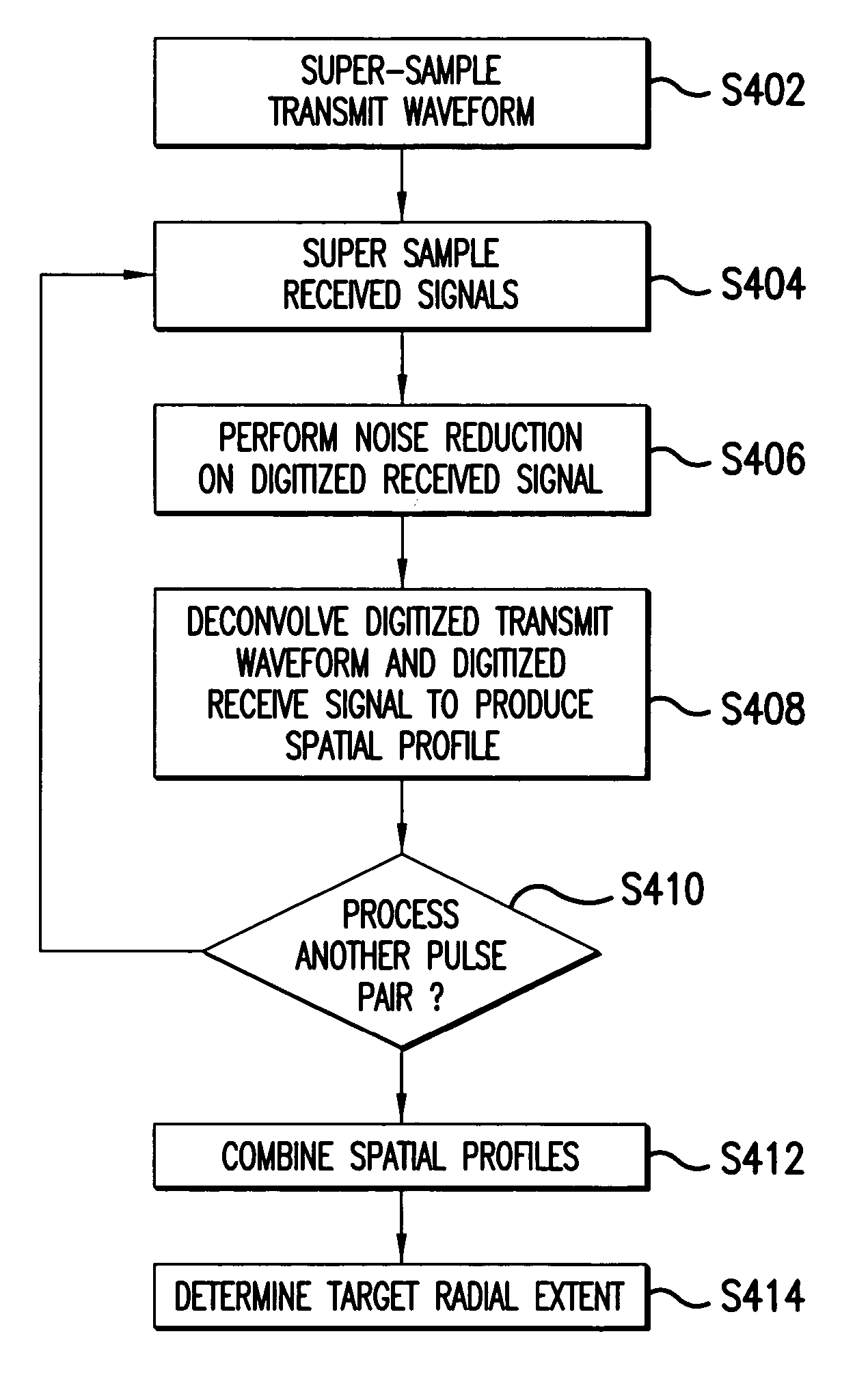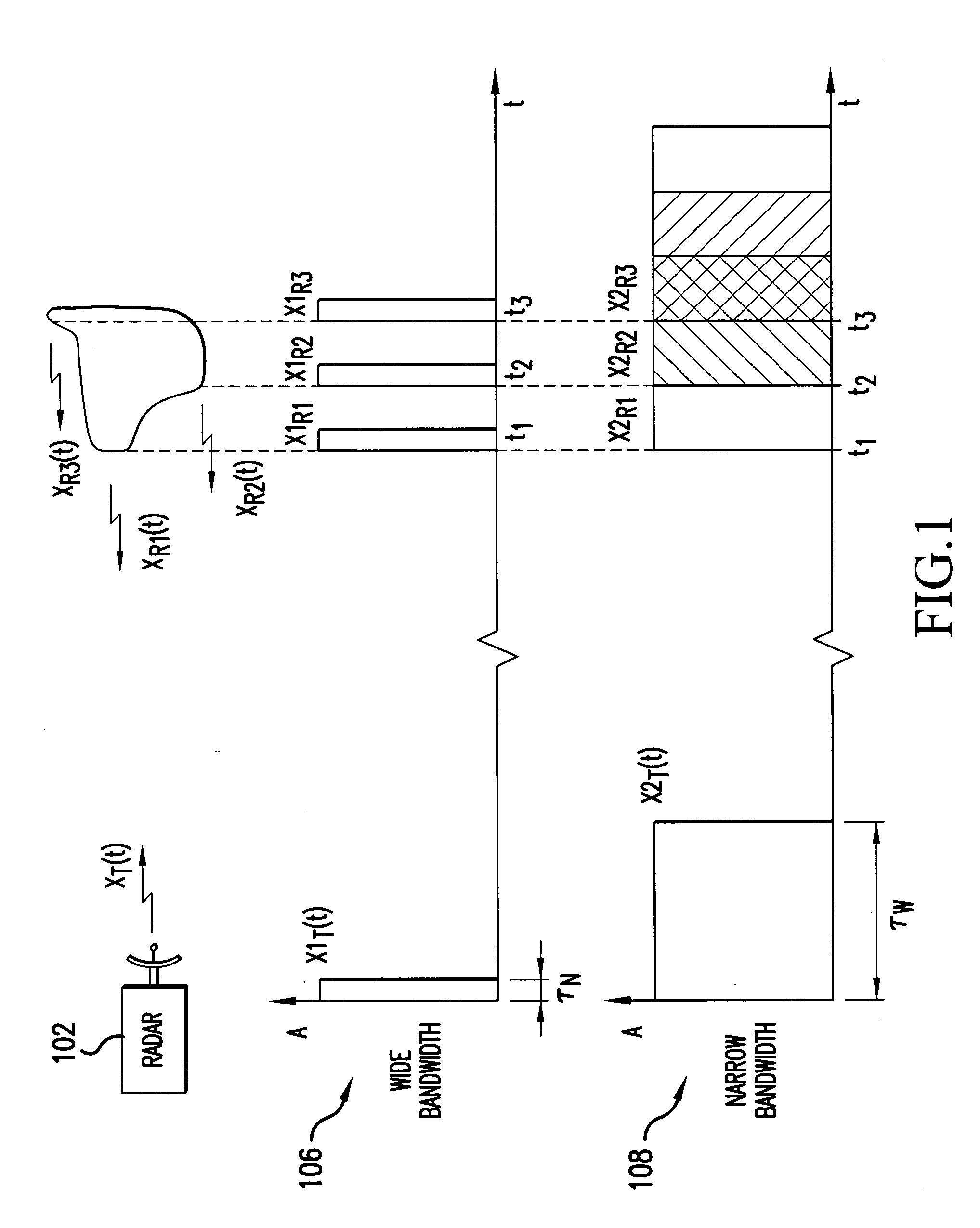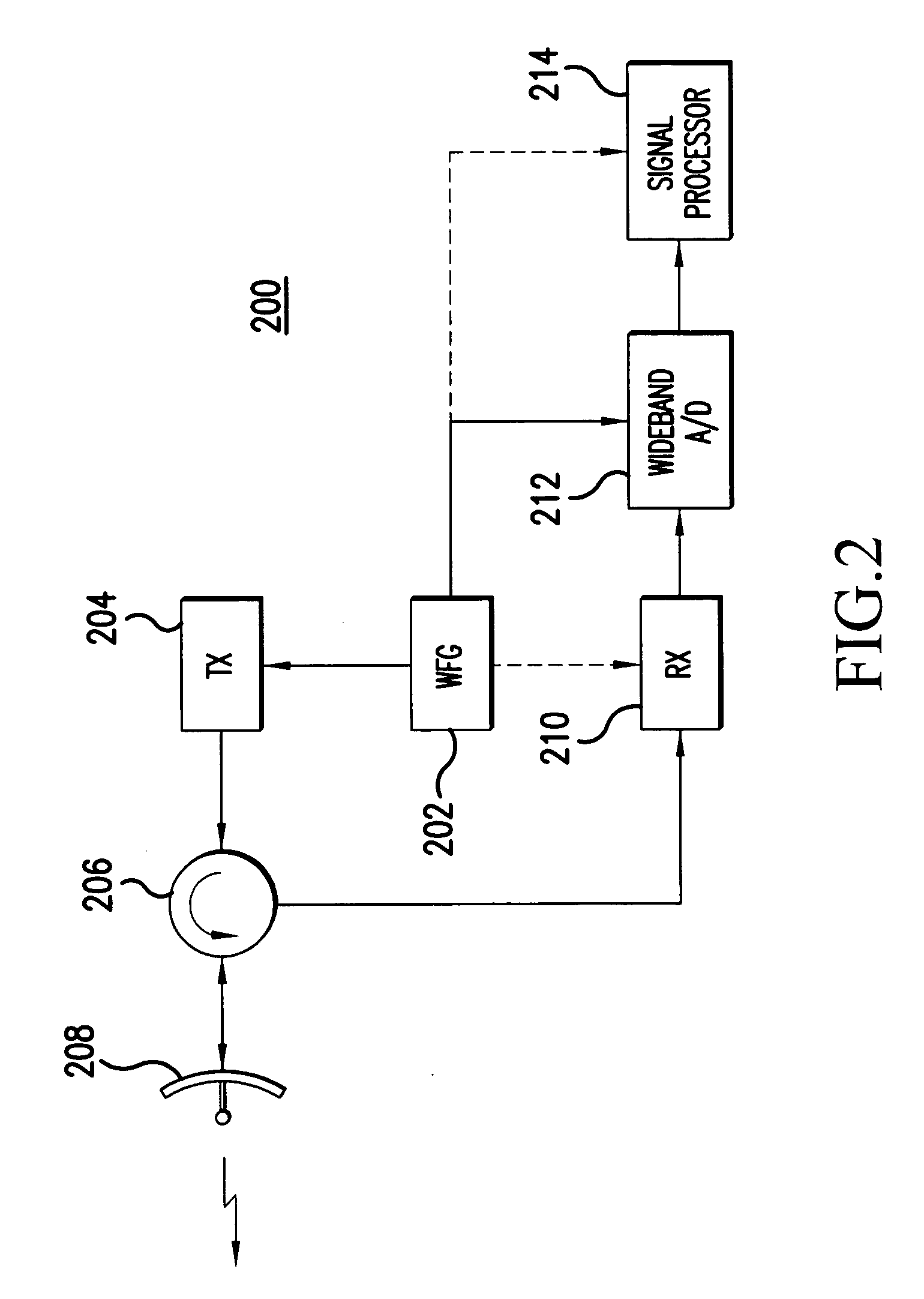Methods and apparatus for target radial extent determination using deconvolution
a target and radial extent technology, applied in the field of determining information about targets, can solve the problems of limited information that can be derived regarding the target, limited the amount of bandwidth used in the transmitted signal, and inability to meet the requirements of the target, so as to achieve the effect of quick and simple manner
- Summary
- Abstract
- Description
- Claims
- Application Information
AI Technical Summary
Benefits of technology
Problems solved by technology
Method used
Image
Examples
Embodiment Construction
[0019] The following detailed description of the invention refers to the accompanying drawings. The same reference numbers in different drawings identify the same or similar elements. Also, the following detailed description does not limit the invention. Instead, the scope of the invention is defined by the appended claims and equivalents thereof.
[0020]FIG. 2 depicts an top-level system diagram illustrating an exemplary radar system 200 consistent with an embodiment of the invention. The system diagram presented here is simplified for ease of explanation. Radar system 200 can be any type of radar system known one of ordinary skill in the art, which could include, for example, surveillance radars, imaging radars, multi-function fire control radars, etc. While radar systems are described herein, those skilled the art will appreciated that other forms of electromagnetic systems, e.g. infrared etc, can benefit from the present invention. Radar system 200 can also be used in conjunction...
PUM
 Login to View More
Login to View More Abstract
Description
Claims
Application Information
 Login to View More
Login to View More - R&D
- Intellectual Property
- Life Sciences
- Materials
- Tech Scout
- Unparalleled Data Quality
- Higher Quality Content
- 60% Fewer Hallucinations
Browse by: Latest US Patents, China's latest patents, Technical Efficacy Thesaurus, Application Domain, Technology Topic, Popular Technical Reports.
© 2025 PatSnap. All rights reserved.Legal|Privacy policy|Modern Slavery Act Transparency Statement|Sitemap|About US| Contact US: help@patsnap.com



